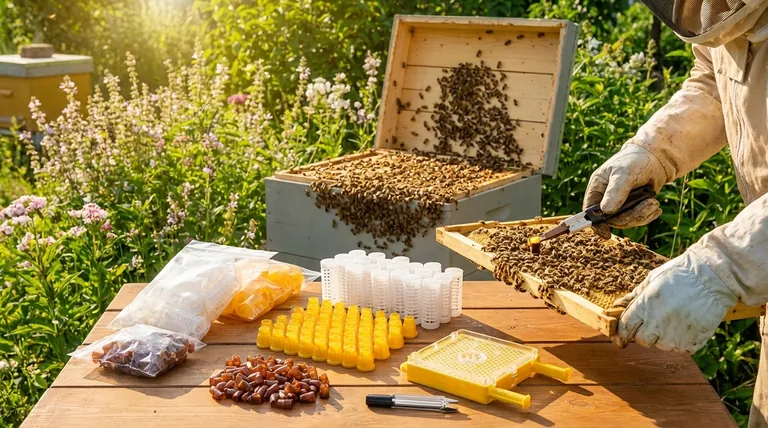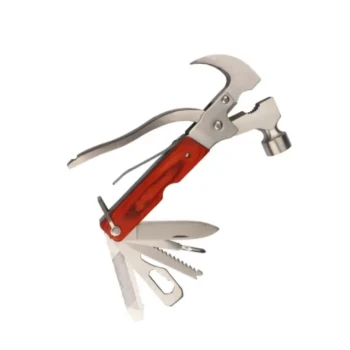In short, the ideal conditions for raising queen cells involve creating a powerful, queenless colony overflowing with young nurse bees, providing it with a strong pollen flow and a light nectar flow, and doing this during the natural swarm season. These factors work together to convince the bees that it is the perfect time to invest their full resources into creating a new, high-quality queen.
The core principle of queen rearing is not just about following a checklist, but about understanding and replicating the biological "swarm impulse." Your success hinges on convincing a colony that it is so strong and resource-rich that its best option is to create a new queen for future survival.

The Foundation: Mimicking the Swarm Impulse
All successful queen rearing methods are an artificial simulation of the conditions that cause a hive to swarm or supersede its queen naturally. You are creating a controlled "emergency" that channels the bees' instinct to reproduce.
The Significance of Population Density
The single most critical factor is an abundance of young nurse bees. These bees, typically 5-15 days old, have fully developed hypopharyngeal glands responsible for producing royal jelly.
A weak or moderately-sized colony simply cannot produce well-fed, robust queens. A proper cell-builder colony should be so packed with bees that they are dripping from the bottom of the frames. This density ensures that a large workforce is available to feed and incubate the queen cells.
Timing and the Queenless Signal
Raising queens is most successful during the natural swarm season (late spring to early summer). During this period, colonies are biologically primed to expand, and environmental resources are typically abundant.
Removing the queen and her inhibiting pheromones is the trigger that initiates queen-rearing behavior. This "queenless signal" immediately focuses the nurse bees' attention on the grafted larvae, compelling them to begin feeding them royal jelly to create emergency queen cells.
Fueling the "Queen Factory": Resource Management
A dense population of bees is useless without the right fuel. The quality and quantity of food directly determine the quality of the queens produced.
Pollen: The Protein Powerhouse
Pollen is non-negotiable. It is the sole source of protein, vitamins, and lipids for the colony. Nurse bees consume vast amounts of pollen to produce the protein-rich royal jelly needed to feed queen larvae.
A strong, diverse pollen flow is ideal. If there is a lack of natural pollen, you must supplement with a high-quality pollen patty. A shortage of pollen is a primary cause of poorly developed queens and low cell acceptance rates.
Nectar Flow: A Delicate Balance
The ideal condition is a light nectar flow. This provides the carbohydrates needed to fuel the colony's activity without creating a major distraction.
A very heavy nectar flow can be counterproductive. The bees may become preoccupied with ripening and storing honey, sometimes even filling the queen cells with nectar, a problem known as "honey-binding." If no natural flow exists, you must simulate one by feeding the colony a 1:1 sugar-water syrup consistently.
Understanding the Trade-offs and Common Pitfalls
While the ideal conditions provide a clear target, it's crucial to understand what happens when conditions are suboptimal.
The Risk of Using Weak Colonies
Attempting to raise queens with a weak cell-builder is a false economy. The resulting queens will be poorly fed, smaller, and have lower reproductive potential. It is always better to combine multiple colonies to create one powerful cell-builder than to use several weak ones.
The Danger of a "Pollen Dearth"
A period with no incoming pollen is known as a pollen dearth. Trying to raise queens during this time without aggressive protein supplementation will almost certainly fail. The bees will not have the biological resources to produce sufficient royal jelly.
Weather and Temperature Stability
While a strong, well-fed colony can generate its own heat even in poor weather, this is not ideal. Queen larvae are extremely sensitive to chilling. They must be kept at a stable brood nest temperature (around 93°F / 34°C). Any transfers of grafted cells should be done quickly and on warm, calm days to avoid thermal shock, which can damage or kill the developing queens.
How to Apply This to Your Apiary
Your approach should depend on your goals and experience level.
- If your primary focus is learning and small-scale rearing: Time your efforts to coincide with your region's main swarm season. This allows you to leverage nature's bounty, as the ideal pollen and nectar flows are most likely to be present.
- If your primary focus is large-scale or off-season production: You must become the provider. This means actively creating populous colonies by shaking in bees from other hives and implementing a rigorous feeding schedule of both 1:1 syrup and high-quality pollen substitute.
Ultimately, a great queen is a direct reflection of the abundance and strength you cultivate within your cell-builder colony.
Summary Table:
| Key Factor | Ideal Condition | Why It Matters |
|---|---|---|
| Colony Status | Powerful, Queenless | Triggers the emergency queen-rearing instinct |
| Bee Population | Abundance of Young Nurse Bees | Provides the workforce to feed royal jelly |
| Pollen Flow | Strong & Diverse | Essential protein source for royal jelly production |
| Nectar Flow | Light | Fuels colony activity without distraction |
| Timing | Natural Swarm Season | Bees are biologically primed for reproduction |
Ready to Elevate Your Queen Rearing Success?
Achieving the ideal conditions for raising robust queen cells requires the right equipment and supplies. HONESTBEE supplies high-quality beekeeping supplies and equipment to commercial apiaries and beekeeping equipment distributors through our wholesale-focused operations. We provide the essential tools—from durable hive components to feeding systems—that help you build and maintain the powerful colonies needed for superior queen production.
Contact our expert team today to discuss your specific needs and discover how our wholesale solutions can support your operation's growth and success.
Visual Guide

Related Products
- Jenter Queen Rearing Kit Complete Set for Bee Breeding
- Brown Nicot Queen Cell Cups for Breeding Queen Bees Beekeeping
- Nicot Queen Rearing Kit for Beekeeping and Grafting in Nicot System
- JZBZ Push-In Queen Cell Cups for Beekeeping
- No Grafting Queen Rearing Kit: System for Royal Jelly Production and Queen Rearing
People Also Ask
- How long does it take for a new queen to emerge, mate, and lay eggs? A Beekeeper's 10-14 Day Guide
- What is the timeline for queen breeding? A 28-Day Guide from Egg to Laying Queen
- How can beekeepers start a honey bee breeding program? Build a Superior, Resilient Apiary
- What are the implications of delayed oviposition in queen bees? A Strategy for Superior Queen Quality
- What are the stages involved in queen raising? A Guide to Controlled, High-Quality Queen Production



















